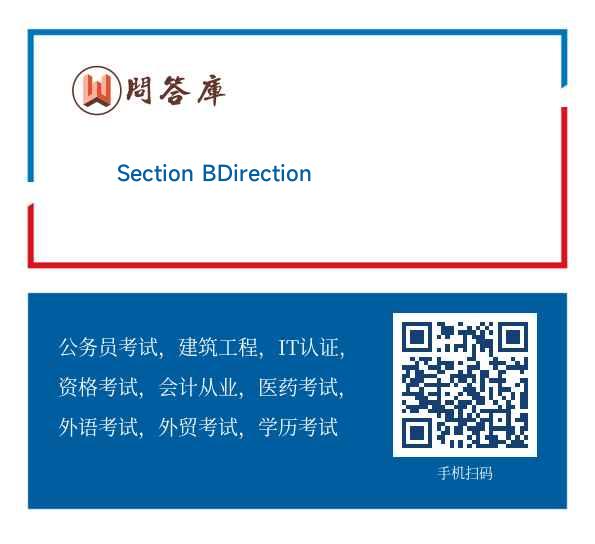Section BDirections: There are 2 passages in this section. Each passage is followed by som
问题详情
Section B
Directions: There are 2 passages in this section. Each passage is followed by some questions or unfinished statements. For each of them there are four choices marked A, B, C and D. You should decide on the best choice.
If there is a college or university in a community with ample student housing, large quantities of bulky goods are generated at both the he ginning and the end of the semester. Typically there is a six to tenfold increase in disposal at the end of the school year, but in the past this material did not get reused or recycled. That trend is changing, increasingly, colleges are providing extra capacity for their recycling containers and collection system at the beginning and end of the school year. At the beginning of the school year, this is targeted to the large amounts of corrugated boxes(瓦楞纸箱) that are generated. At the end of the semester, there is a much wider range of bulky goods and recyclable materials, including bookshelves, mattresses, couches, chairs, tables, bicycles, books, beds, school supplies, and used building materials. These are generally items that students may not want to take home at the end of the school year.
The University of California at San Diego (UCSD) increases collection schedules for recycling and garbage during move-outs. They make sure that all collection containers are empty at the beginning of the week. The university recycling program works with the resident assistants to encourage students to recycle and donate items instead of throwing them away. Dormitory residents see posters in the halls about reusing and recycling bulky items, and they receive leaflets with the message DONATE IT! Most of the housing areas designate a location in a lounge or laundry area for materials to be donated. Every housing area picks a different charity to help. The rule is: if you can reuse it, donate it.
Last year UCSD offered an organized "yard sale" for students to sell their unwanted items before the campus move-outs. Anything not sold was donated to a local teen shelter. The university set out donation boxes for non-perishable food items, and they designated special locations to dispose of unwanted household hazardous wastes. The university recycling program promoted the event and reserved parking lots for this purpose. Unfortunately, not many students participated this first year. They hope to do better in the future.
In Gainesville, Florida, the City of Gainesville conducted a community cleanup and giveaway program at the end of the school year. They collected furniture and household items from students and the community-at-large using charities and city and county staff. The items were stored in a pavilion(大帐篷) on the University of Florida campus. They advertised the giveaway for 9 a.m., but people began lining up as early as 6 a.m. They collected more than 21 tons of materials that were all reused or recycled. It was a huge success and received great publicity.
At the beginning of the school year, a community with many students living there ________.
A.has less trash to deal with than that at the end of the school year
B.has more kinds of trash to deal with than that at the end of the school year
C.does better in getting rid of trash now than that in the past
D.does better in collecting recyclable trash now than that in the past
